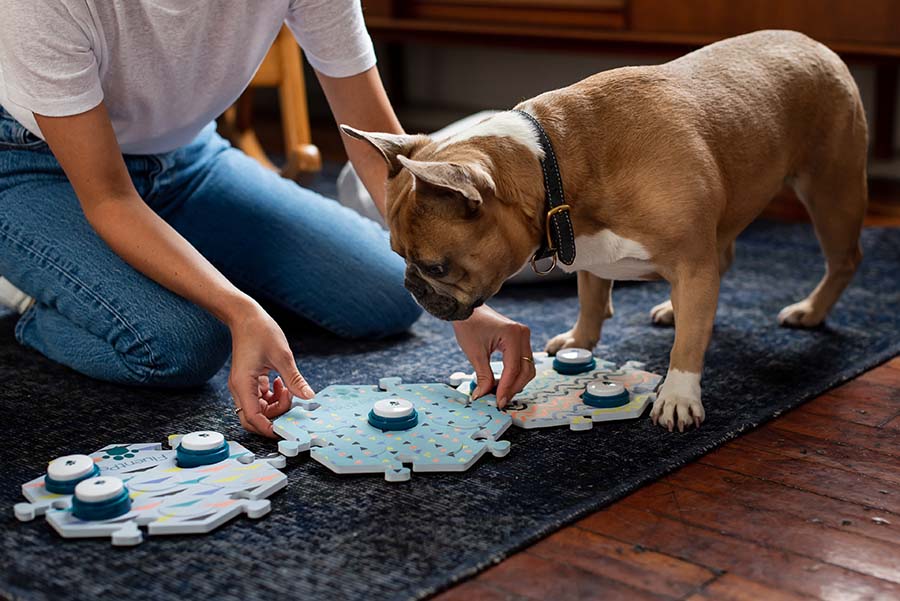
You may have been told that dogs (and cats) don’t see color. Fact or myth?
Myth! Dogs can distinguish between colors, and they can see more than just black and white. It's true that relative to most humans, dogs are, in fact, “colorblind.” However, this only means they can’t see colors quite as well as we can.
But first, what are the fundamental differences between dog and human vision?
Dogs have two types of photoreceptors, or specialized cells for detecting light in their retinas. These photoreceptors are known as cones, which best detect color and details, and rods, which detect motion and provide night vision. Both human and animal eyes possess these photoreceptors, which send signals to the brain after it detects specific wavelengths of light, but the numbers and types of receptors vary from species to species.
Compared to humans, most dogs do not naturally have high visual acuity—they can't see as well or as far as we can. But because they have more rods in the retina than we do, they're better at seeing in the dark, and they're much better at identifying moving objects. It's probably why your dog can zero in so quickly on a squirrel darting about in the backyard—they're tracking its movement. This is also why many dogs are trained to recognize hand gestures and body language.
What about when it comes to color?
Most humans are trichromats, meaning we have three types of cone cells: short, medium, and long-wavelength detectors, which roughly correspond to the colors blue, green, and red. On the other hand, dogs are dichromats with only short-wavelength (blue) and medium-long wavelength detecting cells (red and green). As a result, you could say dog color vision is more similar to humans who are red-green colorblind.

For a long time, researchers thought that due to their dichromatism, dogs used brightness instead of color to distinguish between objects. But a 2013 study found this wasn’t true—dogs can discriminate between objects based on their hue as well (Kasparson et al., 2013). The results of the study caught the attention of dog training communities because historically, trainers had avoided using color cues when working with dogs, including during specialized tasks and retrieval.
How does this compare to other species—for example, cats? Do cats see in color?
Yes, cats can also see in color. We can draw tons of similarities between dog and cat vision; cats also have much more rods than cones in their retinas, they have lower visual acuity, and they're much better at seeing in the dark. They're also considered dichromats with limited color vision, just like their canine friends.
So while cats do see in color, their vision is much better suited to prowling in the dark or catching fast-moving prey. If you've ever seen a cat's eye dilate, then you know their pupils are in the shape of ellipticals, or vertical ovals. This is another characteristic that helps them see better in the dark—an elliptical pupil maximizes their ability to capture as much light as possible.
These findings regarding animal color vision all have implications for button training, too.
While current behavior suggests that most dogs use muscle memory to press the right buttons on their soundboard, it’s also helpful for them to distinguish buttons based on tile location and color. With that in mind, we designed the colors of our buttons and tiles from a dog or cat’s dichromatic perspective in hopes the boundaries could be more easily differentiated.




Leave a comment
This site is protected by hCaptcha and the hCaptcha Privacy Policy and Terms of Service apply.